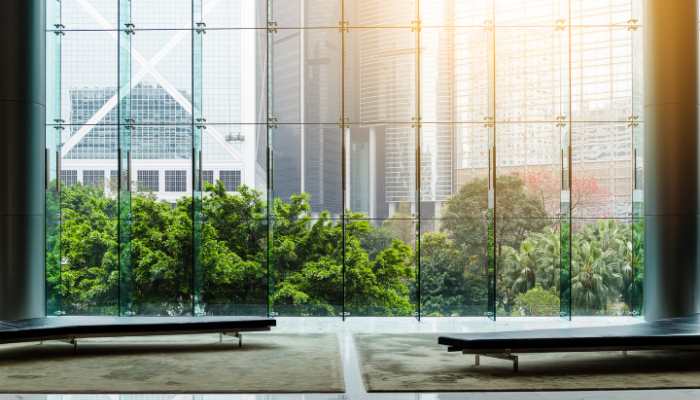Green building practices have gained significant traction in recent years as more people become aware of the need for sustainable construction methods. One crucial aspect of green building is the proper installation of windows, which can significantly impact a building’s energy efficiency and environmental footprint. In this article, we will explore the role of window installation in green building practices and discuss how to choose eco-friendly windows and installers.
Why Window Installation Matters in Green Buildings
The installation of windows plays a vital role in green building practices for several reasons:
- Energy Efficiency: Properly installed windows help reduce heat transfer and air infiltration, contributing to a building’s overall energy efficiency. This can result in lower energy consumption and reduced greenhouse gas emissions.
- Indoor Environmental Quality: Well-installed windows can improve indoor environmental quality by providing natural light and ventilation, reducing the need for artificial lighting and mechanical ventilation systems.
- Durability and Longevity: When windows are correctly installed, they are more likely to last longer, reducing the need for frequent replacements and minimizing waste.
- Resource Conservation: Proper window installation helps ensure that materials are used efficiently, minimizing waste during the construction process.
Choosing Eco-Friendly Windows for Green Building
To maximize the benefits of window installation in green building practices, it’s essential to select eco-friendly windows. Here are some factors to consider when choosing windows for a green building project:
- Energy Performance Ratings: Look for windows with high energy performance ratings, such as those certified by ENERGY STAR. These windows have been independently tested and proven to provide superior energy efficiency.
- Frame Material: Choose a frame material that offers good insulation and durability while being environmentally friendly. Options include sustainably harvested wood, recycled aluminum, or fiberglass made from recycled materials.
- Glazing Options: Opt for double or triple glazing with low-emissivity (Low-E) coatings and gas fills to maximize energy efficiency. Additionally, consider using windows with high visible transmittance (VT) to allow natural light into the building and reduce the need for artificial lighting.
- Recyclability: Select windows that can be easily recycled at the end of their lifespan to minimize waste.
Ensuring Proper Window Installation in Green Building Projects
Once you’ve chosen eco-friendly windows, it’s crucial to ensure they are installed correctly to maximize their benefits. Here are some tips for proper window installation in green building projects:
- Hire a Qualified Installer: Choose an experienced and reputable installer who is knowledgeable about green building practices and window installation techniques.
- Follow Manufacturer’s Instructions: Always follow the window manufacturer’s guidelines for installation to ensure proper functioning and warranty coverage.
- Air Sealing: Ensure that the window is properly sealed and caulked to minimize air infiltration and heat transfer.
- Insulation: Install insulation around the window frame to further improve energy efficiency.
- Proper Flashing: Use appropriate flashing materials and techniques to prevent water intrusion and damage to the building envelope.
- Waste Management: Implement waste management strategies during the installation process to minimize waste and recycle materials when possible.
The Benefits of Green Building Practices in Window Installation
Incorporating window installation into green building practices offers several benefits:
- Reduced Energy Consumption: Properly installed eco-friendly windows can significantly reduce a building’s energy consumption, leading to lower utility bills and a reduced environmental impact.
- Improved Indoor Environmental Quality: Green building practices in window installation contribute to better indoor environmental quality by providing natural light, ventilation, and thermal comfort.
- Enhanced Durability: Eco-friendly windows and proper installation techniques can result in longer-lasting windows, reducing the need for frequent replacements and minimizing waste.
- Increased Property Value: Green building practices, including window installation, can increase the value of a property by making it more energy-efficient and environmentally friendly.
Window installation plays a critical role in green building practices by contributing to energy efficiency, improved indoor environmental quality, and resource conservation. By selecting eco-friendly windows and ensuring they are installed correctly, you can help create a more sustainable built environment that benefits both occupants and the planet. With the increasing importance of green building practices, it’s essential to consider the impact of window installation on a project’s overall sustainability goals.

